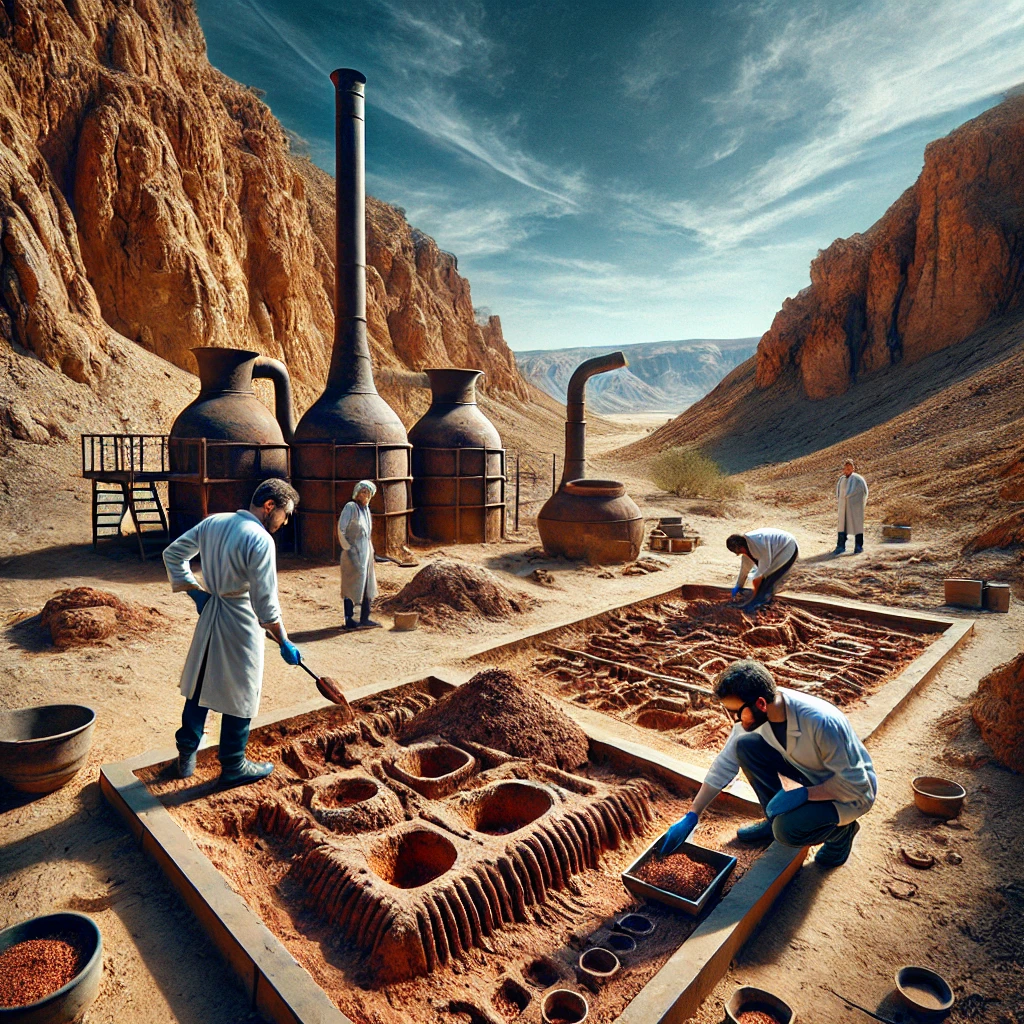New research reveals that ancient copper production linked to the mines of Biblical King Solomon had minimal environmental impact and did not pose widespread harm to workers or surrounding communities, contrary to previous assumptions.
A study led by archaeologist Professor Erez Ben-Yosef of Tel Aviv University overturns a decades-old hypothesis that ancient smelting practices caused significant pollution and health hazards. “We demonstrate that this is not true,” said Professor Ben-Yosef, highlighting that pollution was highly localized. “Only those working directly at the furnace were likely exposed to toxic fumes, while the soil just a short distance away remains entirely safe.”
Evidence from Timna Valley
The research team analyzed two key copper production sites in Israel’s Timna Valley: one dating back to the Iron Age, associated with King Solomon’s era, and another 1,500 years older. Hundreds of soil samples were collected and subjected to chemical analysis, producing high-resolution maps of heavy metal concentrations.
The findings revealed that pollution levels were extremely low and confined to areas immediately surrounding ancient smelting furnaces. “For example, lead concentration—the primary pollutant in metal industries—drops below 200 parts per million just a few meters from the furnace,” explained Professor Ben-Yosef. By comparison, the U.S. Environmental Protection Agency considers industrial areas safe for workers at 1,200 parts per million and residential areas safe for children at 200 parts per million.
Additionally, the study found that heavy metals were securely trapped in slag and other waste materials, preventing harmful leaching into the local environment.
A Broader Perspective
The findings align with similar research conducted in Jordan’s Wadi Faynan region, where analysis of 36 Iron Age skeletons revealed that only three showed signs of pollution exposure. Together, these studies challenge the notion that ancient copper industries caused widespread environmental harm.
“There was a trend in the 1990s to portray ancient copper production as the first instance of industrial pollution,” said co-author Omri Yagel. “These statements often grab headlines but lack solid evidence and unfairly project modern environmental issues onto the past.”
Yagel also criticized the tendency to label any trace of ancient metallurgy as “pollution,” which has led to misconceptions about the scale of environmental impact. Even during periods of large-scale metal production, toxic lead was the primary pollutant, while other metals had negligible effects on broader ecosystems.
Lessons for Today
As modern societies grapple with severe environmental challenges like climate change, researchers often look to the past for parallels. However, Yagel cautioned against assuming that environmental harm has always been a natural consequence of human activity. “While a few pieces of slag may be labeled as ‘pollution,’ this localized waste should not be confused with regional or global environmental damage,” he concluded.
Reference
Yagel, O., Greener, A., Ondricek, W., & Ben-Yosef, E. (2024). Pre-Roman copper industry had no polluting impact on the global environment. Scientific Reports, 14(1), 29675.




